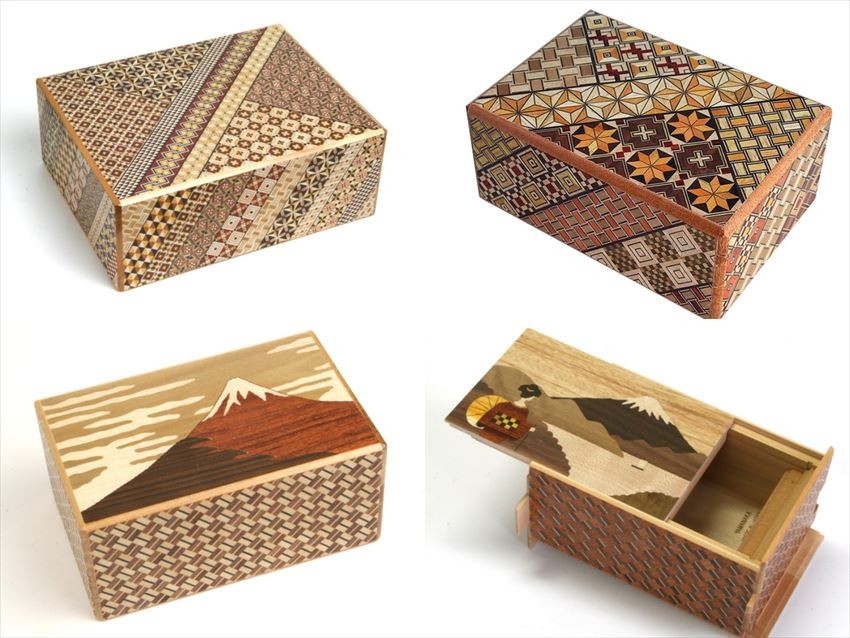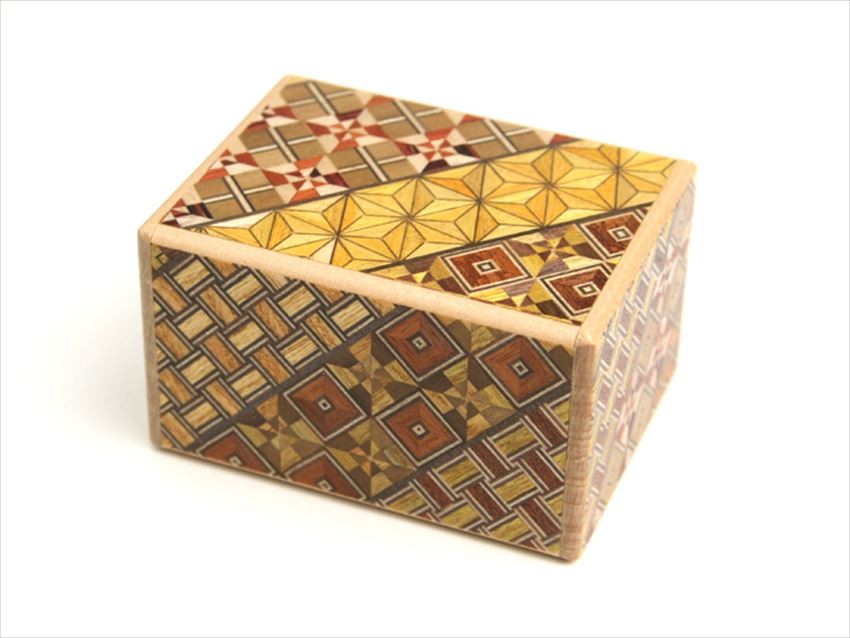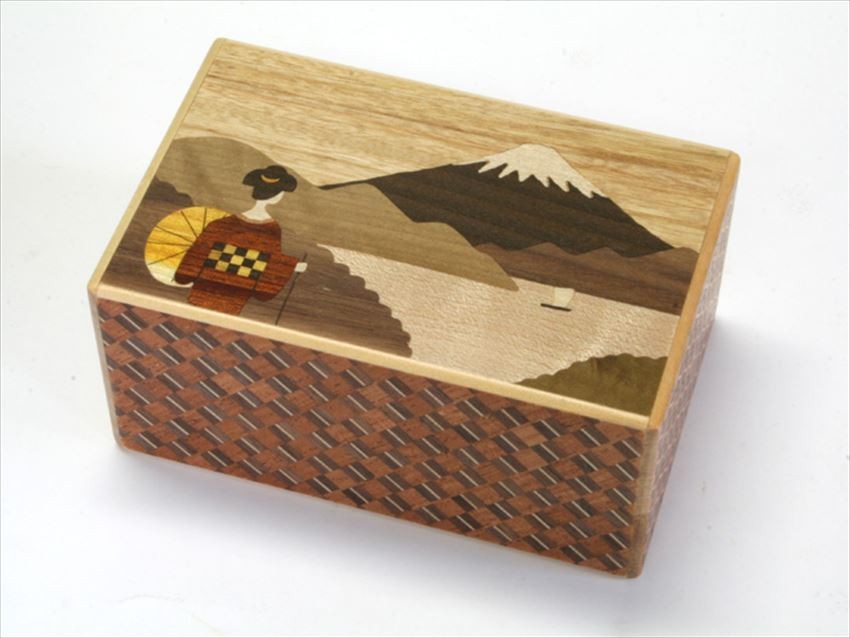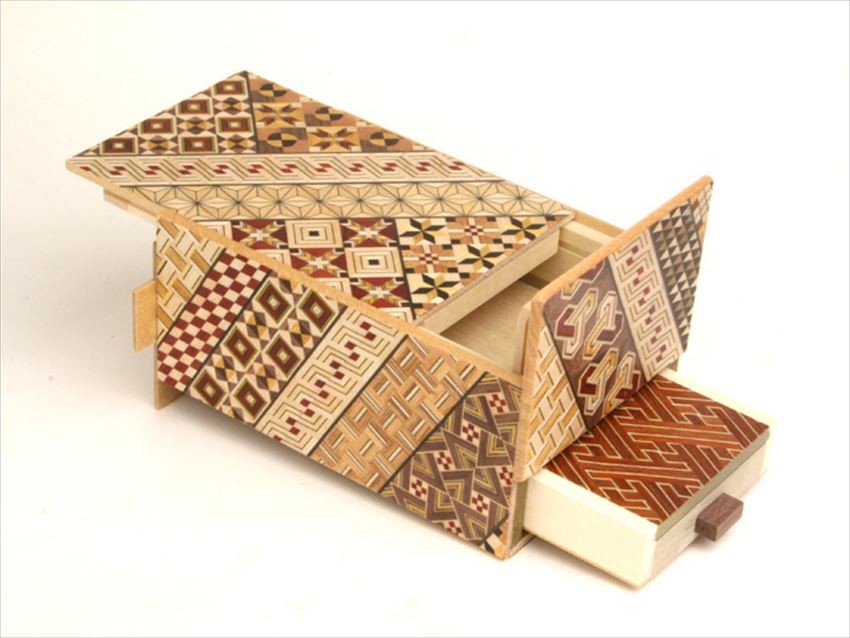“Yosekizaiku” is a woodworking marquetry technique that creates patterns by inlaying various kinds of wood. The history of this famous traditional craft of Hakone dates back 200 years. There are subtly different textures made with traditional Japanese patterns such as stripes (shima) and checkers, making them popular with foreign tourits as a souvenir. There are various shapes and sizes depending on the purpose, etc. However this time we are going to explain the history of "Japanese puzzle box" which uses the technology of Hakone yosekizaiku, and give tips on how to open this puzzle box!

History of the Puzzle Box
The "Puzzle Box" has a complex construction based on the special arrangement on the surface and interior in order to prevent the box from opening unless you open it in the correct way. It is said that the box was invented by Takashiro Okawa, a professional woodworking artisan, who lived in Hakone at the end of the 19th century. It is said that the box was originally made to hide jewels and money.
These secret boxes which are made in Hakone are made by the technique of "yosekizaiku", in which the box is made with a marquetry veneer of woods in the traditional style of Hakone craftsmanship on the surface, and the handle made with wood of a contrasting color. In this way, the joins in the wood which are normally easy to spot, can be hidden.
In the Taisho era, puzzle boxes were exported to Europe and the United States, etc. These days, the number of craftsmen who can produce traditional puzzle boxes is diminishing.
How to open a puzzle box



Reference) Secret Box 12 steps Dimensions: 2.5 inches 78 x 59 x 46 mm 3,000 yen (Maruyama Bussan)
This is a puzzle box that can be opened by sliding panels on the side of the box. It can only be opened if you slide the parts in the right direction and right order. The number of sliding movements until it can be opened is fixed for each box, such as four, seven, 10, 12 times etc. Someone trying to open this for the first time has to adopt a process of trial and error, repeatedly sliding left to right, up and down, etc. in different sequences. The wooden elements slide smoothly because the craftsmen manually check and adjust them one by one.
As the condition of wood changes according to humidity and temperature, sensation is said to be the most important element for a puzzle box. The more sliding steps there are, the greater complexity goes into making the box and the higher the price. There are even some puzzle boxes with 72 steps before it can be opened.
There are various patterns, sizes, and colors

Reference) Puzzle box 3 steps Mt. Fuji 111 x 87 x 51 mm 3,300 yen (Maruyama Bussan)

Reference) Puzzle Box Dimensions: 5 inches, 21 steps Maiko 150 x 97 x 70 mm 8,900 yen (Maruyama Bussan)

Reference) Puzzle box 7 + 1 steps Dimensions: 5 inches with drawer 150 x 97 x 68 mm 12,500 yen (Maruyama Bussan)
patterns and colors are different on each one. There are puzzle boxes with wood inlay depicting Mt. Fuji, triangular-shaped ones instead of rectangles, and puzzle boxes with drawers. Prices tend to be higher in proportion to the size of the box and the number of steps to open it, starting from about 2,000 yen to over 10,000 yen.
All the items illustrated above are from "Maruyama Bussan", a store located in Hakone specializing in Hakone Yosekizaiku products. The Maruyama Bussan homepage has an English version, so if you are interested, please take a look at their website!

Comments